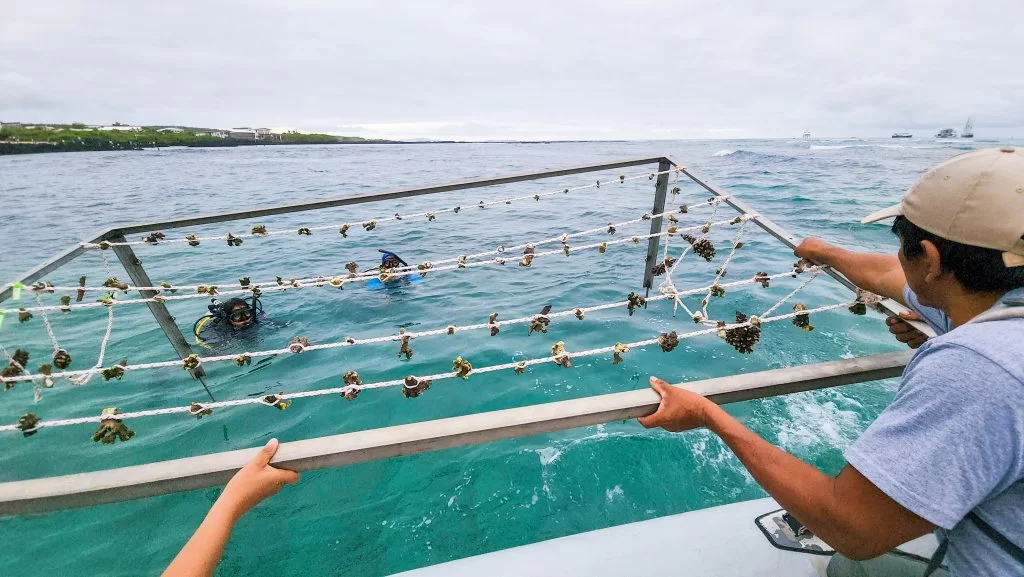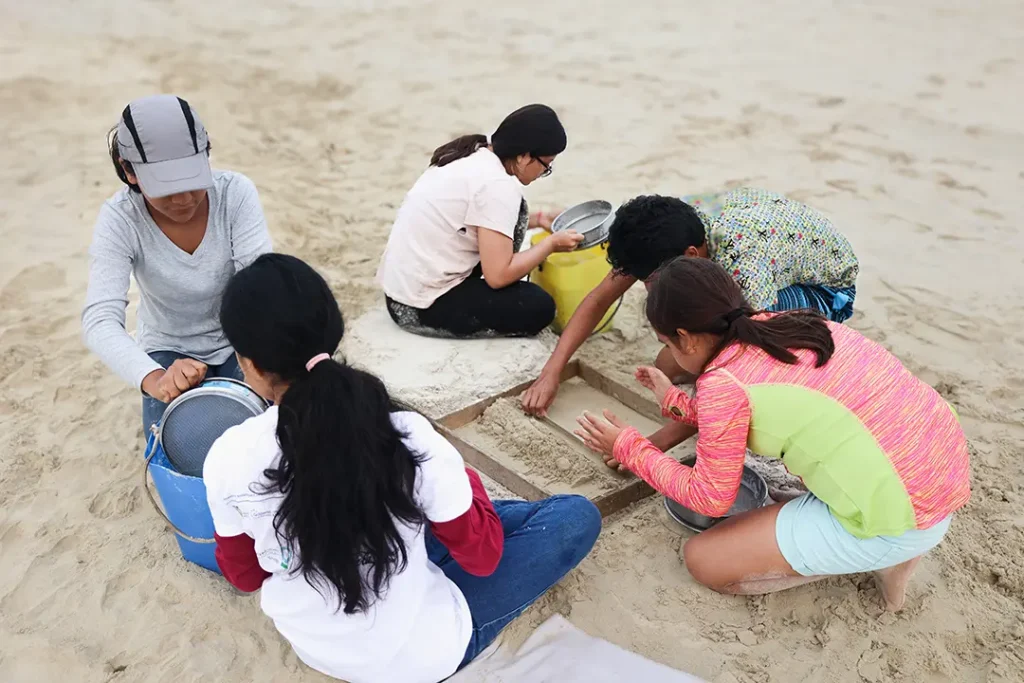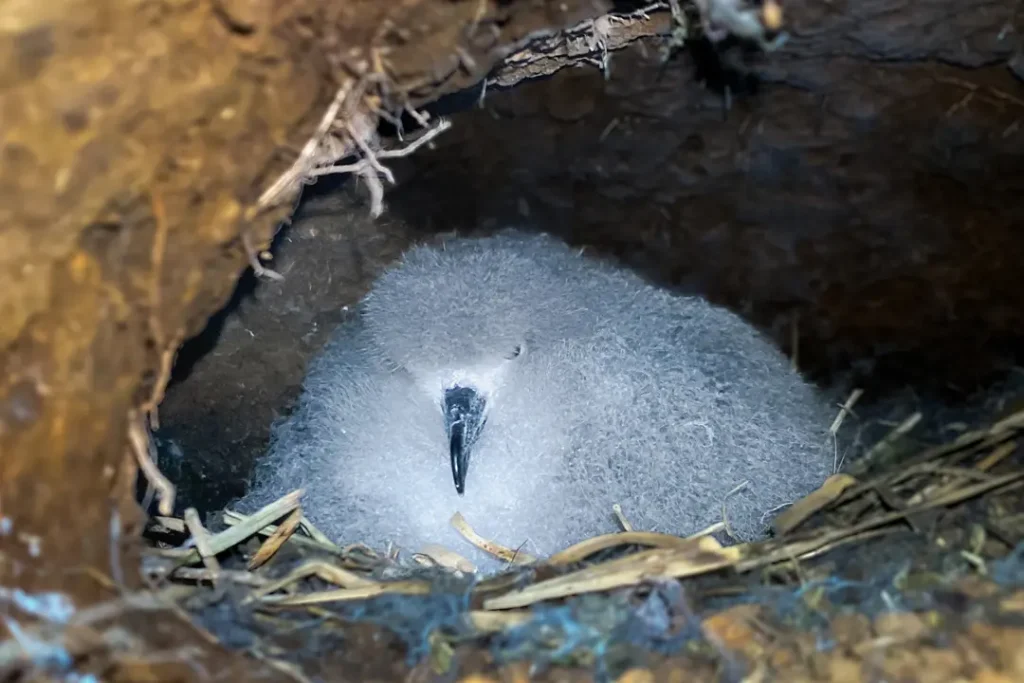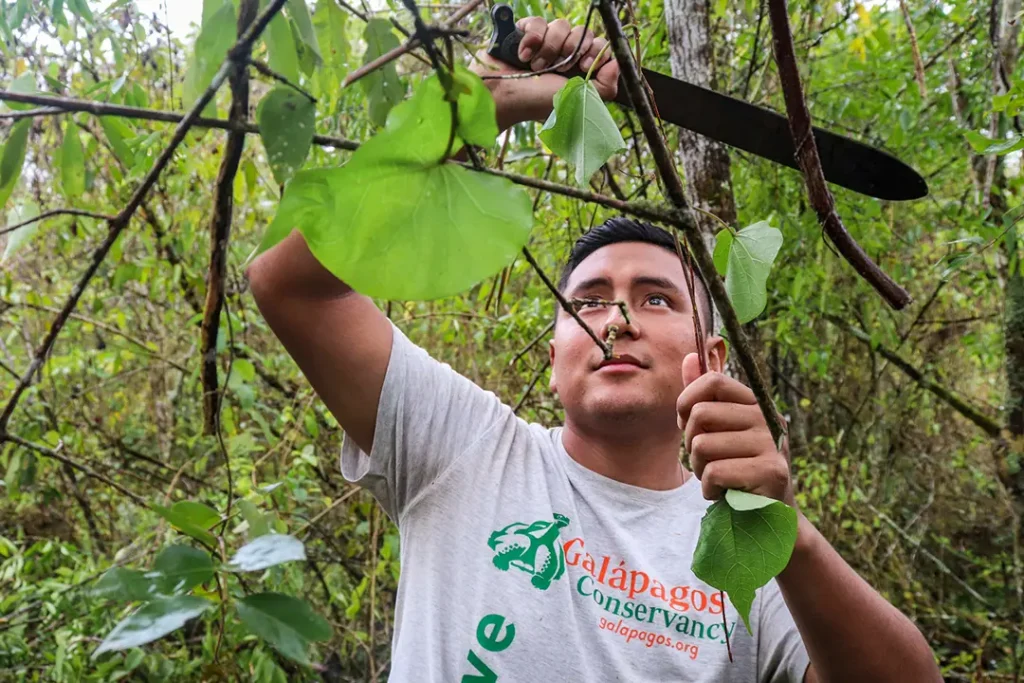Director of Galapagos National Park Danny Rueda noted that the pilot project will be a benefit to ecosystems and local productive sector by regenerating areas with high ecological value. Rueda explained that coral helps to capture CO2 and transform it into oxygen for various species coexisting within marine ecosystems. It also serves as a seedbed of fish and other marine resources valuable to artisanal fishermen in Galapagos, which provides economic and social benefits.
The project was started in 2020. However, Galapagos Conservancy support has since February 2022 made it significantly stronger and yielding very promising results. A nursery currently grows 323 coral fragments from the 8 species of corals that have been planted. It has four planting beds.
Jennifer Suarez is a GNPD project leader, and a park ranger. According to Jennifer Suarez Pocillopora corals grow at a faster pace than other species with an average growth rate of around one inch per month. The average growth rate for Pocillopora corals was 20 mm per mois, while the average monthly growth rate was 43 mm. These averages were calculated using data prior to La Nina in 2021.
Jennifer said that corals can provide shelter, protection and food areas for many species of fish, including sharks, rays and sea turtles.
Washington Tapia is the general director of Conserving Galapagos. This organization is a partner in Galapagos Conservancy. Tapia says that corals are slow-growing and extremely sensitive to changes of ocean temperature. Due to El Nino events of 1997-1998 and 1982-1983, significant coral cover was lost in Galapagos. This is why it is so important to protect this species.
Galapagos Conservancy was pleased to fund this GNPD project. It will also continue to support projects that promote the restoration of GMR’s coral population.



